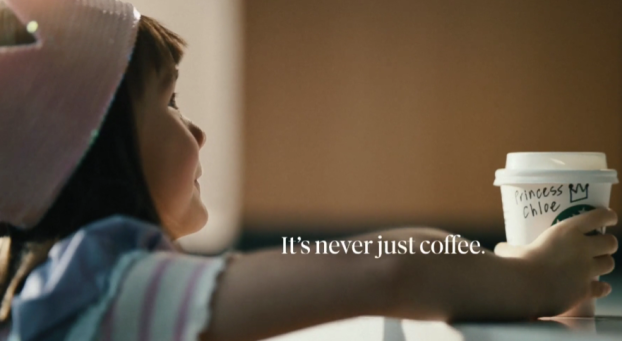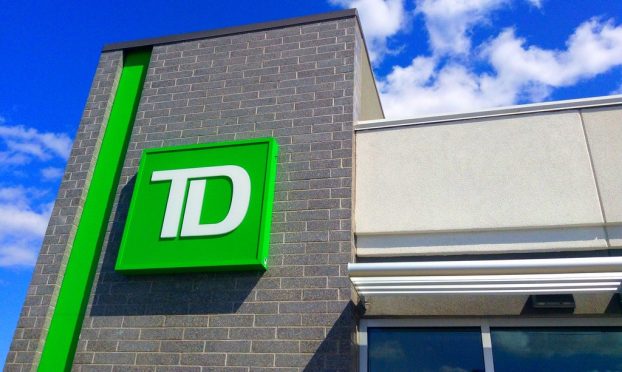Taxi has always been known for breaking the rules. After all, its motto is ‘doubt the conventional to create the exceptional.’ But what happens when unconventional suddenly becomes the convention? When big and small agencies alike are turning to non-traditional media, how do you maintain an edge?
If you’re Taxi co-founder and chairman/CCO Paul Lavoie, you embrace the change. ‘I don’t see that as competition, I see it as endorsing something that’s healthy for the industry,’ he says. ‘Like I’ve said from day one, what’s healthy for the industry is healthy for Taxi and vice versa. It just makes us relevant. We will stand out not by our philosophy, but by the work that we do.’
Our judges noticed. The agency’s sparkling creative returned the shop to medal standing, a place they’d become accustomed to after their record-breaking four-year Gold-winning streak from 2002 to 2005. (Last year they earned an Honourable Mention.) Judges also took note of the agency’s penchant for successfully challenging convention – in its work for Reversa, for instance. ‘Beauty product advertising always plays in the same field of creativity,’ said AOY judge Nicolas Massey, co-founder/CD at Montreal’s Amen. ‘For once, Reversa is taking us somewhere else. Great website and print work that gives the power to the ladies!’ And Craig Redmond, CD at Grey Vancouver, gave tongue-in-cheek kudos to the agency’s work for retailer Canadian Tire: ‘Taxi [has] defied the odds by doing good Canadian Tire ads.’
On the home front, there have been some big shifts in the Taxi universe in recent months. CD Steve Mykolyn has become ECD, filling the shoes of Zak Mroueh, who will stay on till the end of the year. Another office opened in Vancouver (forming Taxi West with Calgary), where, in October, Lavoie’s longtime dream of opening a café was realized when the right piece of real estate was finally found. Joining the ever-growing Taxi franchise is Taxi Film, launched a year ago and dedicated to creating short films and music videos directed by staffers. And Taxi Content recently opened for business to develop branded content in a variety of new media, and will work closely with existing TV and movie production unit Chokolat. All this is not unusual for an agency that continues to defy expectations. We say, score one for breaking the rules.
REVERSA
Dermtek’s Reversa is a Canadian anti-aging beauty brand competing with global giants that have massive budgets for advertising and sampling, as well as highly trained sales forces. Reversa could not compete on that level, so Taxi took a different approach.
To get noticed in the fast-growing category, the agency decided not to follow the typical formula of featuring celebrities in double-page spreads and 30-second TV ads. To reach women over 40 who don’t believe that beauty is the exclusive domain of women in their twenties, Taxi strayed from the science to focus on the consumer social benefits. The most important insight? These women are vibrantly sexual.
The campaign launched with magazines and postcards that demonstrated the sex appeal of the mature woman. Classified ads in newspapers followed, submitted by younger men seeking older women. These efforts drove people to the cornerstone element: a microsite featuring four young men ready to perform for visitors. Upon entering the site, women were asked to choose from one of four Reversa products. Twelve short videos were created, featuring a firefighter, a chef, a plumber, etc. – all young, attractive and attentive. Women could also forward the site to friends, which helped create strong impact with a small media budget.
Additional campaign components included online banners, POS and a provocative viral tactic: an eBay auction of an anti-aging kit, complete with its own handsome young man. The auction was ‘won’ by a female employee of Dermtek, and the proceeds were donated to the Quebec Breast Cancer Foundation.
Sex, of course, sells. Reversa is growing at a pace four and half times that of the category, and sales were up in all key retail outlets. The microsite attracted more than 895,000 visits over an eight-month period. More than 100 blogs talked about the campaign, while more than 30 articles appeared in magazines and newspapers – and the spot also nabbed the lead story spot on one newscast. The campaign also picked up awards from the One Show and Cannes, where it won two Gold Cyber Lions.
ORNGE
The Ontario Air Ambulance service – the distinctive orange helicopter that moves critically ill or injured people from an accident scene to the hospital or from rural hospitals to urban centres – needed to communicate its recent rebranding to Ornge.
Ontario is one of the few jurisdictions in North America with this type of service, and because it’s publicly funded and vulnerable to the economic pressures of government budgets, Taxi needed to highlight the rebranding as well as raise the service’s profile to ensure public support.
The creative sprung from a tragic insight that in travelling the highways of the province, a driver can encounter roadside shrines. Taxi decided to portray the importance of the service by focusing on these scenarios with the tagline, ‘Propelling Life.’
TV was the primary medium in the multimedia campaign. A TV spot shows the wind blowing away makeshift shrines of flowers, teddy bears and photos. The copy reads: ‘Last year, 18,007 lives were saved with help from above.’ A shot of the helicopter comes into focus. Newspaper ads were developed as well as ambient media placed in doctors’ offices and on transit systems.
The campaign has helped to reinforce the human value of this service, and won a Bronze Lion at Cannes.
VIAGRA
Taxi’s sixth campaign for the ED brand needed to continue to position the product in a way that was approachable for the target while meeting Canadian regulations governing the way prescription products are advertised on TV. The result was ‘Gibberish.’
Given the brand’s almost iconic status, Taxi decided to create an entirely new language for it, calling it ‘The Universal Language of Viagra.’
In each of the four executions, set at a park, a bowling alley, a coffee shop and a backyard barbeque, viewers overhear a conversation (in a made-up dialect) between two friends. Their facial expressions and body language convey everything they are thinking and saying (wink, wink).
Seems everyone got it. Aided awareness for the brand is 80%, and tracking determined that while the campaign was on the air, the incidence of ED sufferers consulting their doctors reached its highest peak ever.
‘Gibberish’ has also garnered considerable media attention and hardware: the campaign was mentioned in articles in The New York Times and The Guardian and won two Lions – Gold and Silver – at Cannes.
THE CREATIVE KIDS MUSEUM
The Creative Kids Museum, part of the Telus World of Science in Calgary, is dedicated to the belief that creativity is vital to kids’ development, and was therefore designed to be a place that unleashes little ones’ imaginations and encourages hands-on discovery. With its official opening last October, its executives turned to Taxi to bring that to life.
The challenge for the agency was that while the museum is intended for kids, its communication was aimed at their parents. This quickly became an insight. Adults tend to categorize things in black-and-white terms, whereas kids have no parameters, so the campaign centred around how an everyday object could become something magical if a little child-like imagination was applied.
A series of one-page print ads featured a stick, a pot and a ball, accompanied by a list of the many ways one could interpret them. While construction on the building was underway, banners were applied to perimeter fencing that asked what bulldozers were doing – digging to China, or possibly creating the world’s biggest mud pie?
After the museum opened, signage in the parking lot indicated which spaces were reserved for ogres, and directed the Wicked Witch of the West to park to the left of the Wicked Witch of the East. The experience continued inside: the admission area was divided into lines for adults, kids and imaginary friends.
Tickets for the opening day sold out. Goals for membership sales were exceeded, and more people are coming to the Creative Kids Museum than expected.
CANADIAN TIRE
On a yearly basis, Canadian Tire’s marketing efforts need to support hundreds of different products and seasonal categories while building the larger brand. Last year Taxi developed the ‘Aisle Signs’ campaign, which not only serves as a platform to promote products, but also aims to reinforce how central the brand is to Canadian families.
This year’s creative – which includes more than a hundred TV, OOH, print, radio, POS and online components – continued to build on this strategy. And from a storytelling perspective, it also connected Canadian Tire to family life by introducing the aisle sign directly into the moments – big and small – that make up Canadian life.
At launch, the creative received the highest brand link scores ever reported in Ipsos Reid tracking for a new campaign; since then it has continued to demonstrate an impressive impact on advertising results. For example, in-market tracking has shown a strengthening in consumers’ perception of Canadian Tire as a store that offers the wide range of products shoppers require – beyond the categories that the brand is already known for, like automotive products and tools.
THE WINNING INGREDIENT:
Convention-busting creative
Taxi’s mantra is ‘break the category.’ Whether it’s taboos around humour in the pharma category (Viagra) or sexual fantasies of older women for the cosmetics industry (Reversa), Taxi takes aim at the convention every time, with the intention of smashing it to bits. Often this involves looking at the competition to see what not to do.
The agency also often looks outside traditional creative – to media and technology, for instance – to find the innovative idea. ‘When you’re looking for new media ideas, there are so many things that are available from a technology point of view that aren’t even on the radar of agencies,’ says Lavoie. ‘That’s why we’ve got engineers now.’
An internal site dubbed Taxi Labs gives designers and coders a space to post their inventions and pet projects, such as user interfaces and widgets, where they can be admired by everyone in the company and cherry-picked for use in project work. Labs has been so successful that one tool (a particularly clever web interface) became the focus of two separate pitches to two different clients in two cities on the same day – and both clients
bought it.
Head count: 331 (Toronto: 150, Taxi 2: 23, Montreal: 79, Vancouver: 18, Café: 2, Calgary: 9, New York City: 50)
Recent hires: Cheryl Grishkewich, promoted to GM in Toronto; Victoria Grey as GM, Taxi West, overseeing Calgary and Vancouver; Cory Pelletier in Toronto and Elayna Gorbatyuk in Montreal, creative media directors
New business: Holt Renfrew, Aviva
Biggest accomplishment: ‘It comes down to one word: global,’ says Taxi Canada prez Rob Guenette. ‘We scored three global campaigns this past year, two of them out of Taxi 2. One is the ATP [Association of Tennis Professionals], which is in 63 countries. The other one out of Taxi 2 is Mini. We scored a global interactive campaign for their environmental platform, and we’re doing that out of Munich; it’s on their global site now. And the third one is YoungGuns [International Advertising Award], based in Sydney, Australia. Every year they approach an agency to do their global campaign, so we’ve done it, it’s up, you can take a look at it at letusbeyourfirst.com. And that’s running literally in every country in the world.’























